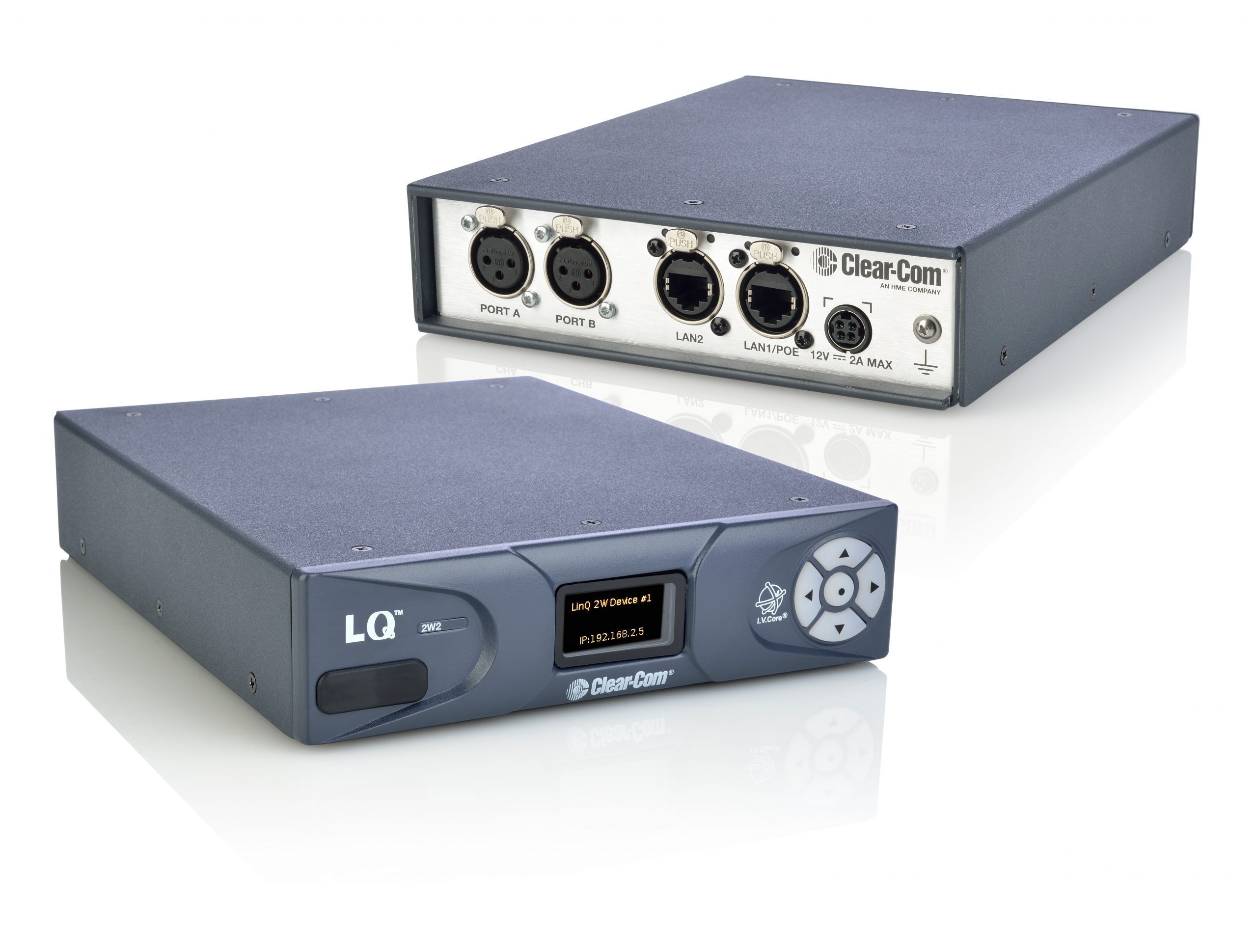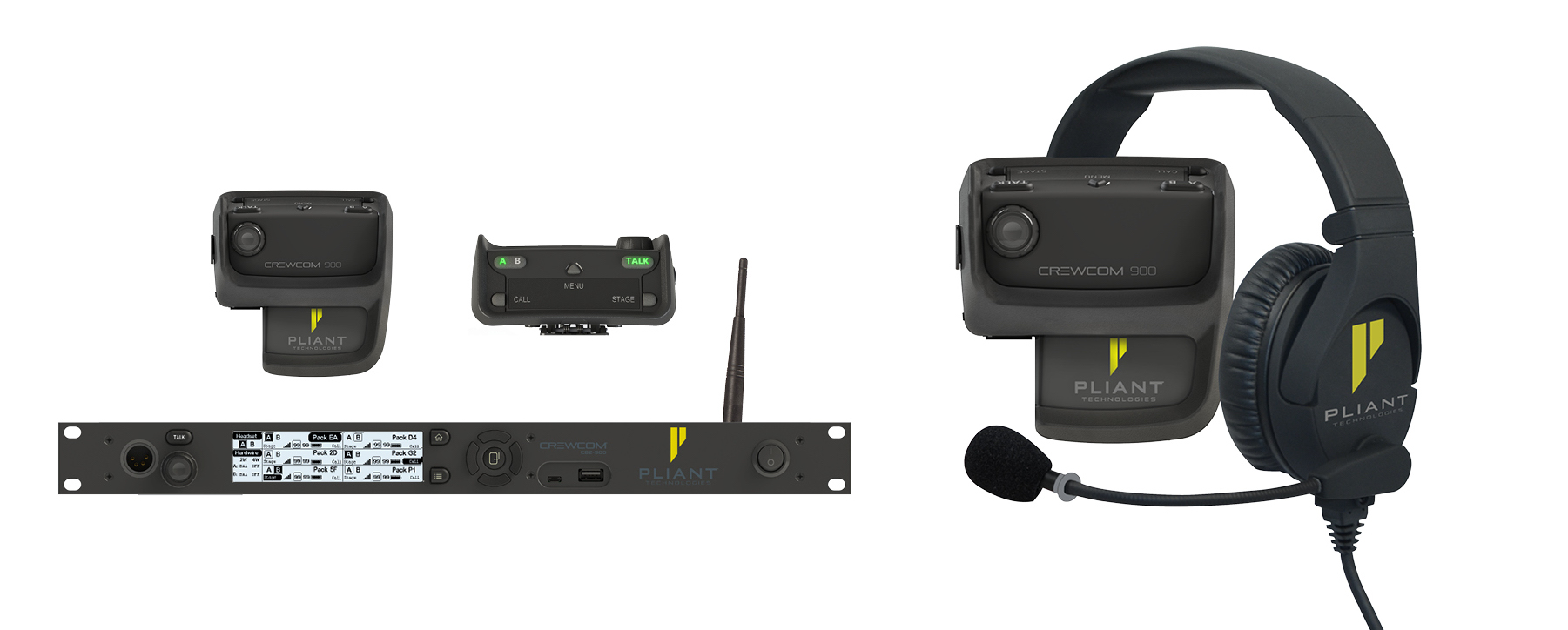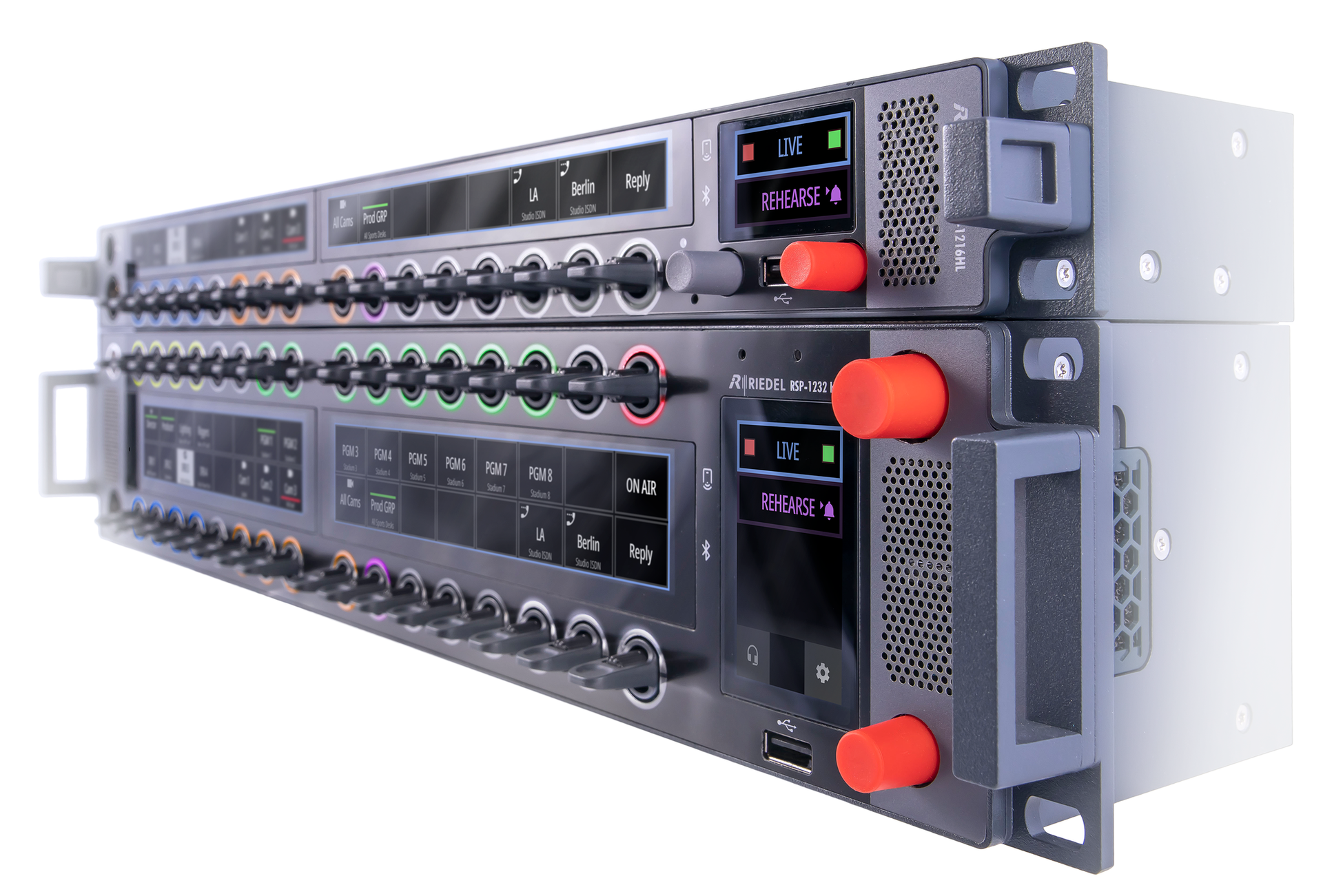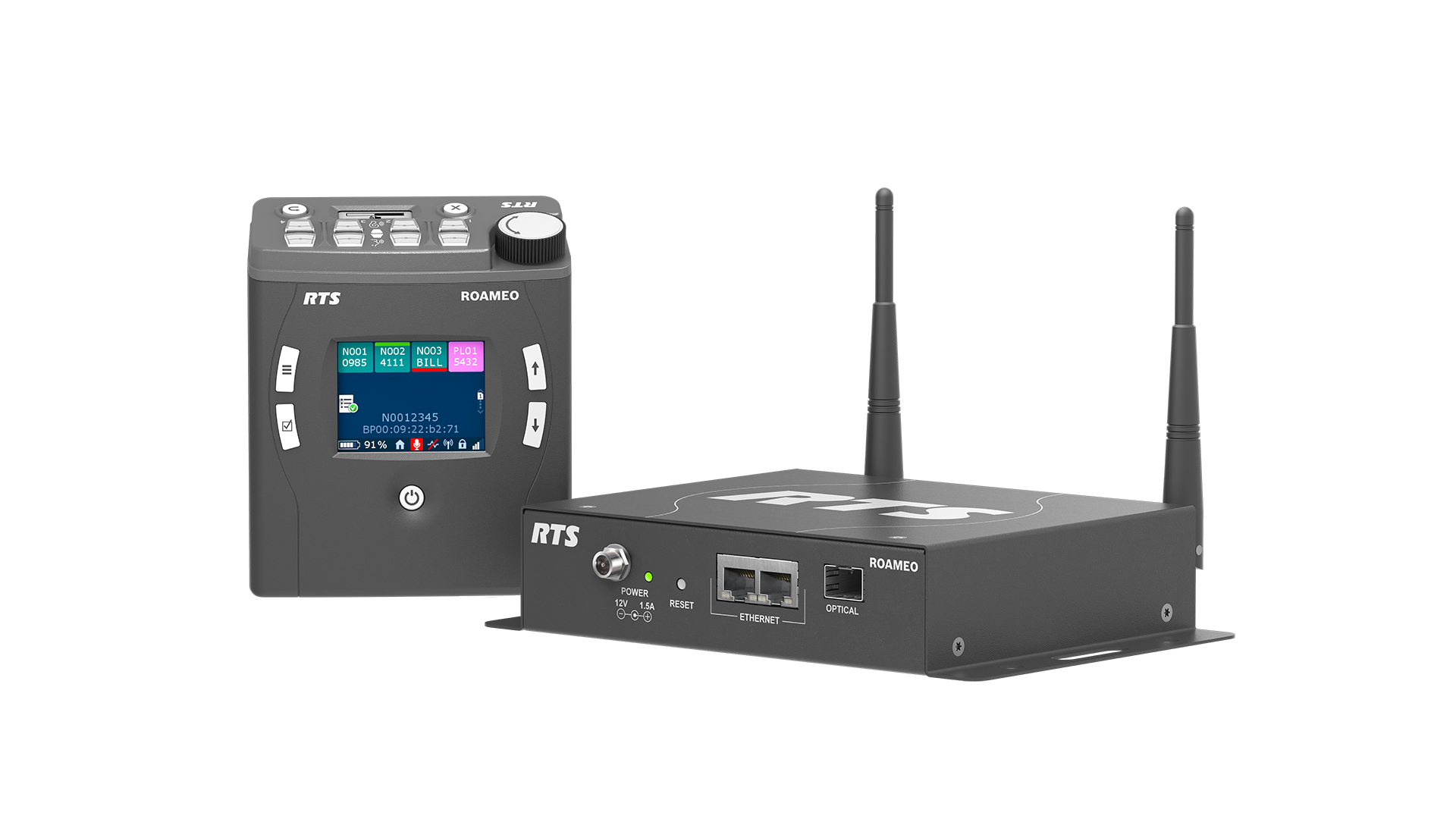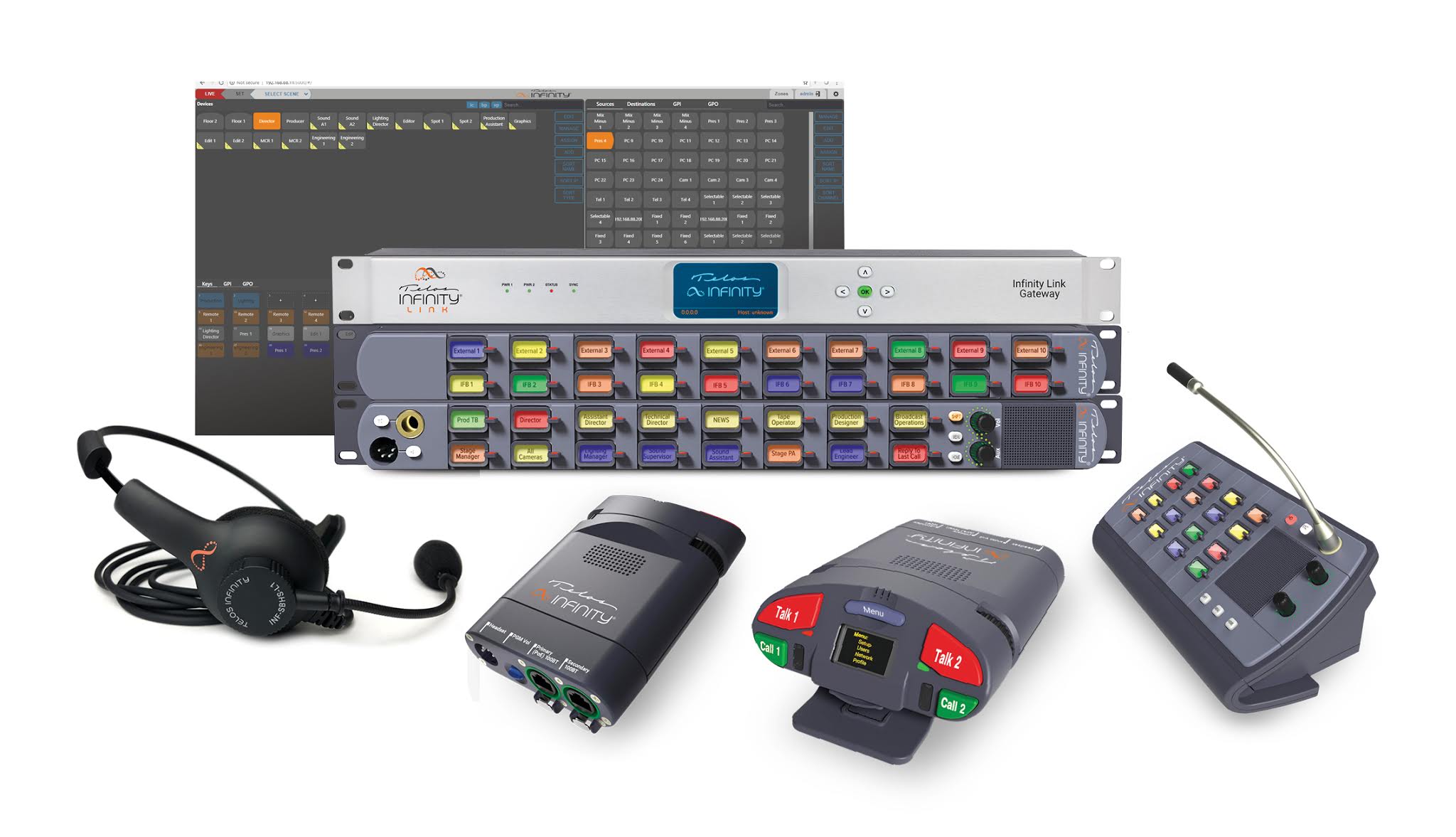Tech Focus: Intercoms, Part 2 — An Increasingly Competitive Market
Offerings are available for IP, wireless, and cellular platforms
Story Highlights
By pro-audio standards, intercoms constitute a small market sector, but it’s one that so critical — and, in the age of supercharged REMI production, increasingly competitive. Here’s a look at the latest offerings from the market leaders.
Click here for Tech Focus: Intercoms, Part 1 — Pandemic Speeds Evolution.
Clear-Com’s HX Digital Matrix, LQ Series of IP interfaces, and Agent-IC mobile app have been critical in enabling seamless communications for remote-production activities during the coronavirus pandemic. Agent-IC has been used extensively to provide an easy-to-implement communication solution between facility-based staff and production teams on location for field reporting, live event production, remote coordination, and other critical tasks. Literally at-home production personnel who have downloaded the app onto their smartphone, tablet, or wearable device can connect to a host Eclipse HX digital matrix or local and remote LQ IP interfaces over 3G, 4G, LTE, and Wi-Fi networks. App users have a fully functional intercom panel that can monitor the intercom system and receive IFB feeds. LQ can extend the capabilities and intercom channels of an Eclipse HX system to one or more remote locations by positioning an LQ device at the destination location and interfacing with Clear-Com devices, including wired beltpacks, SIP clients, or any Agent-IC mobile app user. Local and remote LQ devices can host up to 48 Agent-IC users, where LQ acts as a server for the app. With a host Eclipse HX matrix, many more Agent-IC users can access the production intercom remotely; the number able to access the main intercom can vary depending on the quantity of IP ports on the E-IPA cards. LQ devices can link industry-standard 2-wire intercom and 4-wire audio systems, irrespective of brand and platform. They also work with SIP telephony systems, allowing Clear-Com’s portfolio of intercom systems to seamlessly connect with VoIP phones.
CrewCom wireless intercom system from Pliant Technologies features full-duplex wireless radio packs and extreme range, with multiple RF access points that connect via copper (100 m) or fiber (10 km). CrewCom wireless products are available in 2.4-GHz and 900-MHz models (the latter are limited to where this band is legal). Any combination of these frequency bands may be simultaneously used on the same CrewCom system, providing the ability to put RF coverage where needed while deploying a consistent user interface throughout the system. CrewCom offers a significant price advantage for larger applications, when comparing the actual cost of deploying multiple wireless users in a production.
Pliant’s newest wireless-intercom offering, CrewCom CB2, available in 2.4 GHz and 900 MHz, offers the same proven CrewCom wireless technology while also providing ease-of-use and high-level performance at an affordable price point for a full-featured intercom system. CB2’s straightforward design makes it fast and easy to set up but powerful enough for full-time professionals. With CB2, it’s now possible to have up to six full-duplex wireless users on one system or easily add a second system for up to 12 users, without compromising audio quality or coverage.
Pliant’s MicroCom XR digital wireless intercom system provides full-duplex, multi-user intercom for applications where high-quality audio, extended range, and affordability are essential. The system is a robust two-channel intercom system available in 2.4 GHz and 900 MHz and features ease of use, extended range, and the ability to have up to 10 full-duplex users and unlimited listeners, providing flexibility for a range of applications.
Riedel’s Artist digital-matrix audio and intercom ecosystem handles the widest range of audio formats, including AES3, AES67, AVB, Dante, VoIP, and analog. A fiber-based backbone provides a decentralized infrastructure for live audio and intercoms, with matrix sizes up to 1,024 x 1,024 ports in just 2RU. Multiple frames can be interconnected via dual optical fiber ring to form a single large, full-summing, non-blocking distributed matrix that looks like one system to the user. The Director configuration software is easy to use and boasts the industry’s fastest upload times.
Riedel’s Bolero is a full-roaming, DECT-based wireless intercom system in the license-free 1.9 GHz frequency range. Fully integrated into the Artist digital matrix intercom or used as standalone, Bolero offers robust features that can be applied as a wireless beltpack, a wireless keypanel, or a two-way radio. Several new technologies power Bolero’s capabilities, including an Advanced DECT Receiver (ADR) for multipath tolerance improvement and near-field communication (NFC) for easy, Touch&Go beltback registration. Bolero also features six channels, Bluetooth connectivity, and nearly 18 hours of battery life. Three network modes are available for Bolero systems, each dedicated to specific applications:
- Bolero Integrated leverages the Artist infrastructure, including SmartPanels and extensive I/O connectivity.
- Bolero Standalone Link provides plug-and-play simplicity especially suited to smaller installations, portable deployments, or cases when Bolero needs to be interfaced to other systems without an Artist matrix.
- Bolero Standalone 2110 (AES67) enables users to set up a standards-based (SMPTE 2110/AES67) IP network with no Artist required.
The network modes feature multiple full-color multitouch displays, innovative hybrid-lever keys, the ability to leverage apps for multifunctionality, and easy adaptability to the various workflows in use today. Uniting powerful intercom, control, and audio-monitoring functionalities in a single keypanel, the 1200 Series SmartPanels deliver a truly unique combination of capabilities that empowers users while saving valuable rack or desk space. Alongside the 2RU RSP-1232HL with 32 lever keys and stereo speakers, there also is a 1RU version available: the RSP-1216HL comes with the same feature set as its big brother but with 16 lever keys and one full-range speaker. All 1200 Series SmartPanels natively support AES67 and can be connected to the host network via fiber SFP or copper RJ45 connections. There are actually two fiber SFP cages and two copper RJ45 connections, offering a variety of daisy-chaining and redundancy options for cabling flexibility.
ROAMEO from RTS uses the license-free DECT (Digital Enhanced Cordless Telecommunications) standard, a professional-grade, future-proof wireless intercom solution with a protected frequency band. It provides high-quality audio via a seamlessly integrated digital wireless beltpack and associated access points. Operating like a wireless keypanel, ROAMEO can be fully integrated into an existing ADAM series. The system allows users to address either individuals or specified groups. The system consists of the TR-1800 beltpack, the AP-1800 access point, and accessories including a charger, holster, and pole-mount kit. Connection to a digital matrix is easily established via a single Ethernet cable. In addition, the system can use standard IT infrastructure, and access points can be daisy-chained. ROAMEO’s cellular structure can cover a wide area with seamless roaming between individual cells. Users can expand the coverage area by adding further access points, while additional wireless beltpacks can be directly addressed as part of a wired RTS matrix intercom system. Depending on the audio codec used, users can select either a higher emphasis on voice quality (G.722 full bandwidth) or a more efficient use of the radio spectrum with a higher number of beltpacks (G.726 narrow-band). ROAMEO can be configured via scroll lists on the beltpacks or by using the control software, which allows users to configure the complete intercom system. It offers a large color LED display and intuitive icon-based menu structure, and the four talk/listen buttons are shaped differently to provide users with a tactile feedback, enabling operation in low-light conditions.
Telos Infinity IP intercom is a 100%-digital system with seamless integration between broadcast audio and communications channels. Full 20-Hz-20-kHz audio response allows intercom channels to be taken to air with no degradation of sound quality. Standalone rack-mount, desktop, and integrated Axia console modules are available for a turnkey intercom installation. Station presets and GPIO functions can be programmed via any standard web browser. It’s an Ethernet-based system with no central matrix or card-cage and is naturally scalable. Eliminating the need for a centralized matrix improves workflow and frees space, allow easy scaling as endpoints are added. The number of intercom stations can be expanded by simply plugging in new stations. Infinity connects natively with the Telos VX Enterprise Broadcast VoIP phone system for next-generation SIP Telephony integration. Among other features are analog I/O on both XLR- and StudioHub-compatible RJ-45 connectors, as well as front-panel locking connections to accommodate mini-mics and headsets. Minimizing signal bandwidth and offering plug-and-play configuration, Infinity’s new Link Lite VoIP mode for beltpacks and panels delivers instant connectivity for at-home production teams. For site-to-site production, Infinity Link enables connectivity of full-scale remote productions using the speech-optimized OPUS codec, bringing local and remote production centers together over IP LAN/WAN.
 Unity Intercom full-duplex production intercom system connects users from anywhere in the world over wired, Wi-Fi, or cellular links and allows simplified remote broadcast production. The system comprises two parts: the Unity Intercom server software installed on a Mac computer and the remote talk and listen client applications on iOS, Android, Mac, or Windows operating systems. The Unity Intercom Server handles audio routing, channel setup, and user management for all Unity clients. The client applications connect over wired, Wi-Fi, or cellular connections to talk and listen on independent PL channels or point-to-point private communications with individual users. Each client app can communicate with up to 128 PL channels which can be organized into as many as 64 groups. All clients have the ability to receive up to 64 external audio sources on the Unity apps. A common practice is to bring in Dante audio using Dante Virtual Soundcard (DVS) or any external I/O device connected to the Mac Server (Thunderbolt/USB). This allows users to be connected to traditional comms systems or even monitor up to 64 audio feeds remotely. This has been especially crucial for many “at-home” productions this past year. The Unity Max license removes the normal 63-user maximum and allows as many users to be online concurrently as the Mac computer can handle. Some productions have had more than 500 active online users at the same time on a single Mac server.
Unity Intercom full-duplex production intercom system connects users from anywhere in the world over wired, Wi-Fi, or cellular links and allows simplified remote broadcast production. The system comprises two parts: the Unity Intercom server software installed on a Mac computer and the remote talk and listen client applications on iOS, Android, Mac, or Windows operating systems. The Unity Intercom Server handles audio routing, channel setup, and user management for all Unity clients. The client applications connect over wired, Wi-Fi, or cellular connections to talk and listen on independent PL channels or point-to-point private communications with individual users. Each client app can communicate with up to 128 PL channels which can be organized into as many as 64 groups. All clients have the ability to receive up to 64 external audio sources on the Unity apps. A common practice is to bring in Dante audio using Dante Virtual Soundcard (DVS) or any external I/O device connected to the Mac Server (Thunderbolt/USB). This allows users to be connected to traditional comms systems or even monitor up to 64 audio feeds remotely. This has been especially crucial for many “at-home” productions this past year. The Unity Max license removes the normal 63-user maximum and allows as many users to be online concurrently as the Mac computer can handle. Some productions have had more than 500 active online users at the same time on a single Mac server.
